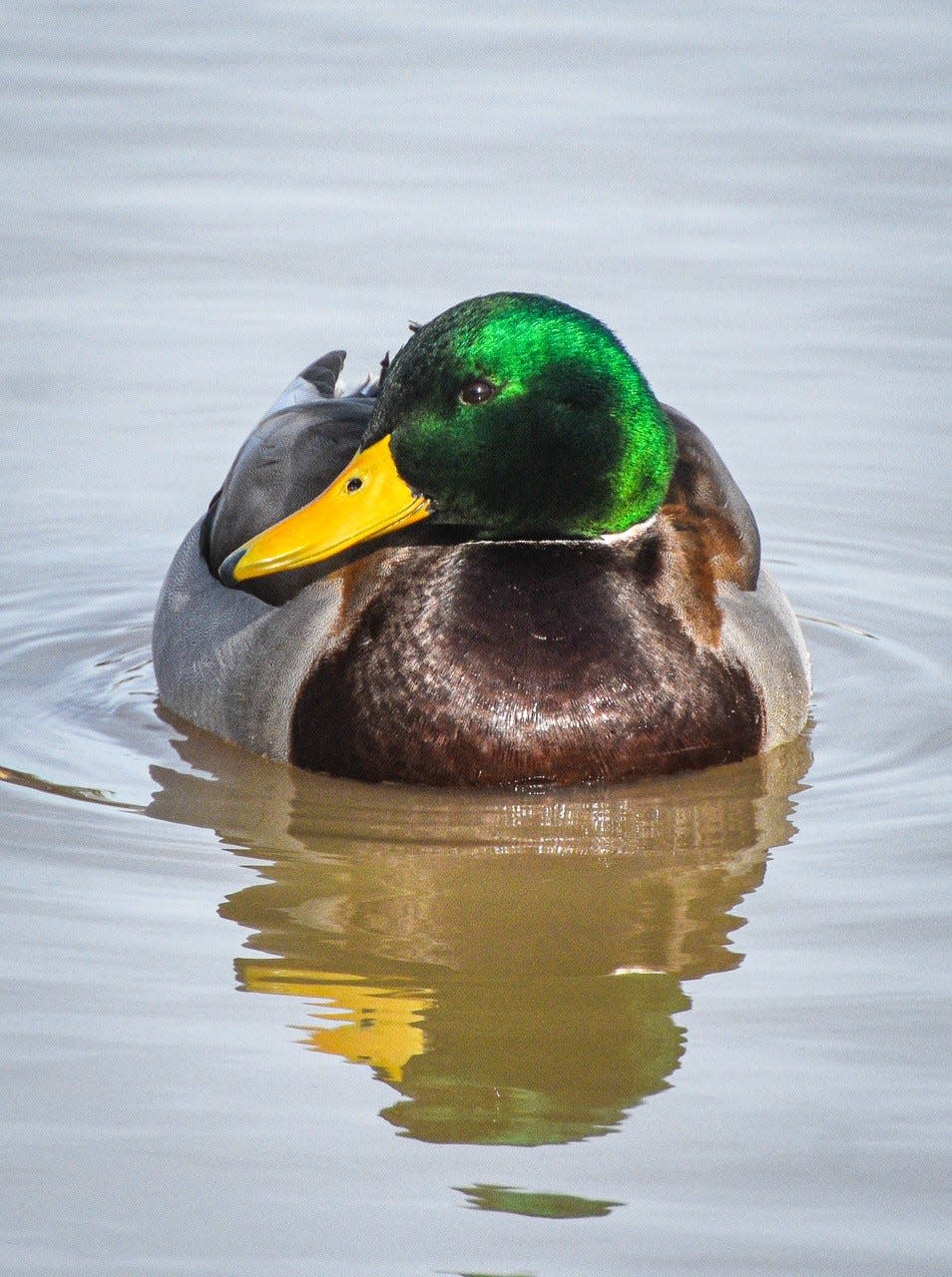It may quack like a duck, but science shows eastern and western mallards are different
Kwanh -kwanh!
Or, if you prefer: gā-gā, pa-pa, kain-kain, wak-wak, háp-háp, krya-krya, or gaab-gaab …

These are the various ways French, Chinese, Greek, Hindi, Arabian, Hungarian, Russian, and Thai might imitate the call of a mallard (Anas platyrhynchos), probably the most common duck in the world.
But, of course, to English speakers, it’s quack-quack. And, by the way, it’s only the females that “quack.” Male mallards make a softer, rasping sound.
Waddling about city parks and college campuses, floating on a borrow pit pond beside a turnpike overpass, or dabbling (tipping over, butt in the air) to feed on aquatic plants in marshes, flooded fields and roadside ditches, they are typically the first — and for many, the only — duck that many people learn to identify.
That is to say, the first drake (male) duck. With his iridescent green head and yellow bill, narrow white ring about the neck, reddish-brown chest and perky black tail curl, he’s hard to miss. In contrast, the female’s mottled brown plumage and black-smudged orange bill make her easy to overlook.
And that’s all to the good. For about a month, the hen will spend most of each day and night incubating her clutch of up to a dozen eggs, which is generally situated in tall vegetation close to water. Her camouflage coloring will help protect her brood from nest-raiding predators like racoons and foxes. Meanwhile, the brightly colored male abandons the female shortly after she begins incubation.

Well, actually, that isn’t quite correct. While this may be true for wild mallards, in urban and artificial environments where there’s less cover to hide the nest, it’s increasingly common to see males remaining with the female through egg hatching, presumably to provide extra protection.
All of which brings up an interesting point — the impact of human actions on the mallard’s biology. Until the early 1900s, for example, this most common species of duck was actually quite uncommon throughout eastern North America. A clue as to what changed can be found by comparing the genetics of mallard populations east and west of the Mississippi.

Mallards have developed a difference in the U.S.
In 2020, a research team headed by Phillip Lavretsky of the University of Texas at El Paso reported that while western mallards are genetically indistinguishable from those living 150 years ago (when comparing DNA obtained from modern and museum specimens), eastern mallards are quite different.
The difference appears to be the result of large-scale releases of game-farm mallards of Eurasian origin for hunting purposes. Between 1920 and 1950, some 500,000 were released annually from states and provinces along the Atlantic coast, and about 200,000 each year since.
By 2010, about 92% of eastern mallards sampled had a significant component of game-farm mallard genes while only 40% of those sampled along northern parts of the Mississippi flyway (a migration route from Wisconsin and Minnesota, southward) showed substantial game-farm hybridization. Further south along the flyway, in Arkansas and Mississippi, only 4% of sampled mallards were hybrids between native North American and Eurasian mallards.So, it seems the further west and south you go, the less presence there is of Eurasian Mallard genes in populations of wild North American mallards.
Game farm mallards have changed the makeup of birds
So what?
For a long time, it was assumed that the release of game-farm mallards to augment wild population numbers didn’t make much difference. But that now appears to be wrong. Our game-farm mallards are derived from Eurasian game-farm mallards that have been under human domestication for thousands of generations to incorporate a variety of features making them easier to manage in agricultural settings.
As such, game-farm males are overly aggressive breeders, females have prolonged breeding periods, produce excessive numbers of eggs and show poor anti-predator vigilance compared with wild mallards. On top of that, they’ve been shown to have less than half the genetic diversity seen in wild populations, making them more susceptible to environmental fluctuations.
While such traits may make it easier to propagate mallards in a farm setting, they are detrimental in a wild population, and the spread of game-farm genes within native populations of mallards has become a concern. Indeed, several surveys have shown declines in eastern mallard populations of about 38% from 1999 to 2017, although this has not been shown to be directly linked to hybridization with game-farm birds.
In contrast, mid-continent mallard populations remain about 19% above overall long-term abundances, although the easternmost areas of this region (in the Great Lakes area) have experienced declining numbers.
It appears that genes from game-farm mallards are moving westward. A 2023 study examining 296 mallards harvested in Northwest Ohio found that 65% had some level of game-farm genes in their genetic makeup, which represents a lower incidence of hybridization than that seen in eastern North America, but more than that observed in mid-continent locales.
So, the question becomes, if it walks like a duck, and it quacks like a duck …
Is that enough?
Ken Baker is a retired professor of biology and environmental studies. If you have a natural history topic you would like Baker to consider for an upcoming column, please email your idea to fre-newsdesk@gannett.com.
This article originally appeared on Fremont News-Messenger: Not all mallards are still the same in the United States

